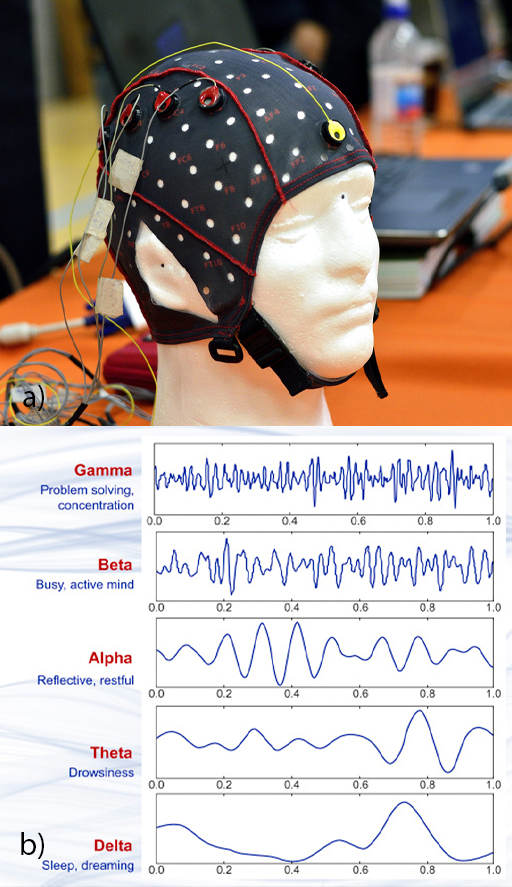EEG
As discussed in Section 2, neurons transmit electrical signals around the brain. The electrical activity of large numbers of neurons synchronise into large-scale oscillations called brain waves, which can be measured directly by placing electrodes on the scalp. These electrodes detect voltage fluctuations due to the brain waves, which are then recorded as an electroencephalogram (EEG). The result is a picture of how the brain waves change over time.
This technique has shown that different frequencies of brain waves are associated with different mental states, from highly active learning to deep sleep (Figure 11).

While the EEG technique can detect very rapid changes in brain activity, it can’t measure the precise locations of activity.
